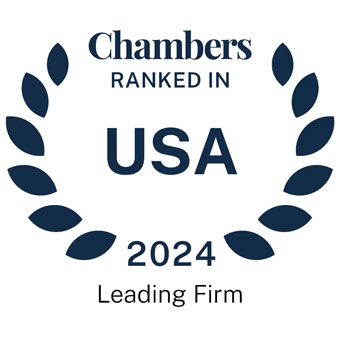As a special holiday treat last December, two bills were signed into law: the Paperwork Burden Reduction Act and the Employer Reporting Improvement Act. These new laws will help ease the burden of Affordable Care Act (“ACA”) reporting and give employers more time to respond to proposed penalty assessments under the Internal Revenue Code Section 4980H Employer Shared Responsibility rules.
Alternative method allowed for distributing Forms 1095-C to full-time employees.
Employers with 50 or more full-time employees (including full-time equivalents) in the prior year (“ALEs”) are required to file Forms 1095-C with the Internal Revenue Service (“IRS”) and distribute these same forms to their full-time employees. These forms provide information on the medical plan coverage that was offered to the employee. Under the Paperwork Burden Reduction Act provisions, ALEs are no longer required to automatically mail Forms 1095-C to employees. Instead, an ALE may provide a “clear, conspicuous, and accessible” notice explaining that Forms 1095-C are available upon request (i.e., the “Notice of Availability”). If an individual requests a copy of their Form 1095-C, the ALE must furnish a copy of the statement on or before January 31st of the year following the calendar year for which the return was required to be made, or 30 days after the date of the individual’s request (whichever is later).
Content of Notice. We currently do not have guidance regarding what content is required in the Notice of Availability. However, it is worth noting that the IRS has issued guidance regarding “alternative methods of furnishing” the ACA Form 1095-B returns (i.e., the ACA returns used by insurance carriers, etc.), and it can be reasonably anticipated it will issue similar guidance with respect to Forms 1095-C. Under the ACA Form 1095-B rules, a participant’s statement is considered properly furnished if it meets requirements such as those listed below.
- The employer posts a clear and conspicuous notice that is reasonably accessible to all responsible individuals, stating that responsible individuals may receive a copy of their statement upon request;
- The notice includes an email address and physical address to which a request for a statement may be sent;
- The notice includes a telephone number that individuals may use to contact the plan with any questions;
- The notice is written in plain, non-technical terms; and
- The notice is posted on the website for a certain period of time. (Note: The Forms 1095-B must be posted from March 3, 2025 through October 15, 2025.)
Deadline for posting Notice of Availability. Generally, the deadline for distributing Forms 1095-C is January 31st of the year following the year in which plan coverage was provided (e.g., January 31, 2025 for 2024 statements). However, the IRS has issued guidance providing for an automatic 30-day extension of time to distribute the Forms 1095-C. In particular, the 2025 Instructions for Filing Forms 1095-C state that “the due date for furnishing Forms 1095-C is automatically extended from January 31, 2025 to March 3, 2025.” It’s not clear whether this 30 day extension also applies to the period of time to provide the Notice of Availability, and/or the deadline for responding to requests for the Form 1095-C. We hope to have more guidance from the IRS on this issue in the near future.
Forms 1094-C and 1095-C must be filed with the IRS. It’s important to note that even though these new rules simplify the Form 1095-C employee distribution requirements, ALEs are still required to file Forms 1094-C and 1095-C with the IRS. For calendar year 2024, Forms 1094-C and 1095-C are required to be filed with the IRS by February 28, 2025, or March 31, 2025 (if filing electronically).
State reporting requirements still apply. Although the Paperwork Burden Reduction Act simplifies the Form 1095-C distribution process at the federal level, this Act does not change the distribution requirements for states with individual health insurance mandates (e.g., California, New Jersey, Rhode Island, etc.) Accordingly, employers should carefully review any applicable state reporting distribution rules to see whether paper distribution is still required in those states.
Note: In California, employers offering medical plan coverage must generally report individual enrollment information to the California Franchise Tax Board (“FTB”), and distribute the Forms 1095-C by January 31, 2025, for California purposes. However, the California rules provide that “if you have already furnished the federal Form 1095-C to an individual for federal purposes, it is not necessary to provide an additional copy to that individual for California purposes.” Now that the federal rules allow an ALE to count posting the “Notice of Availability” as a method of properly “furnishing the Forms 1095-C to employees,” it seems reasonable to take the stance that if an employer provides the Notice of Availability to its employees, it will have satisfied both the federal and California state furnishing requirements (i.e., it is not necessary to separately mail out the Forms 1095-C to California employees).
Form 1095-C TIN requirement simplified.
ALEs are required to report employee and dependent (if applicable) social security numbers/tax identification numbers (TINs) on the Form 1095-C. The Employer Reporting Improvement Act simplifies this requirement by providing that if an ALE is unable to collect such TINs, the individual’s date of birth may be reported instead. This new rule applies to Forms 1095-C due after December 31, 2024 (e.g., 2024 Forms due in 2025).
Note: The current TIN solicitation rules generally require that an ALE request the TIN three times. It’s not clear under the new rules whether an ALE is still required to solicit the TIN three times before reporting the individual’s date of birth. More guidance on this issue would be helpful.
Electronic distribution of Forms 1095-C allowed with consent.
Under current rules, an ALE may distribute Forms 1095-C electronically (e.g., by email or by informing the individual how to access the Form 1095-C on the ALE’s website). However, an ALE must obtain the individual’s prior consent before distributing the Forms 1095-C electronically. The Electronic Reporting Improvement Act clarifies that if an individual has affirmatively consented to receiving their Form 1095-C electronically at any prior time, the ALE can rely on this prior consent unless the individual affirmatively revokes such consent (e.g., the ALE does not need to obtain new consents annually). This rule applies to Forms 1095-C due after December 31, 2024 (i.e., 2024 Forms 1095-C due in 2025).
Extension of time to respond to IRS Letters 226J.
If the IRS has determined that an ALE owes Employer Shared Responsibility penalties (i.e., the penalties an ALE may be subject to if they do not offer affordable, minimum value medical plan coverage to their full-time employees), it will send the ALE a Letter 226J which outlines proposed penalties. If the ALE disagrees with the proposed assessment, it may appeal. The Employer Reporting Improvement Act extends the amount of time that an ALE has to respond to the Letter 226J. Under the new rules, an ALE has at least 90 days from the date of the Letter 226J to respond to the proposed assessment.
Note: ALEs previously had only 30 days to respond to a Letter 226J. Having additional time to analyze the proposed assessment, gather relevant documents, coordinate with ACA reporting vendors, and respond to the IRS is welcome news.
Six-Year Statute of Limitations on Employer Share Responsibility Penalty Assessment.
The Employer Reporting Improvement Act clarifies that there is a 6-year statute of limitations for ACA employer shared responsibility penalty assessments. Effective for returns due after December 31, 2024, the period of assessment will expire at the end of the 6-year period beginning on the due date for filing the associated Forms 1094-C and 1095-C.
Note: The IRS previously took the stance that no statute of limitations applied to these penalty assessments. Accordingly, this clarification is welcome news for ALEs. Further, this clarification will assist ALEs in determining the appropriate period of time for retaining documents related to potential employer shared responsibility assessments (e.g., documents demonstrating that the ALE offered affordable, minimum value coverage to its full-time employees).
If you have questions about these new rules, please contact us.



